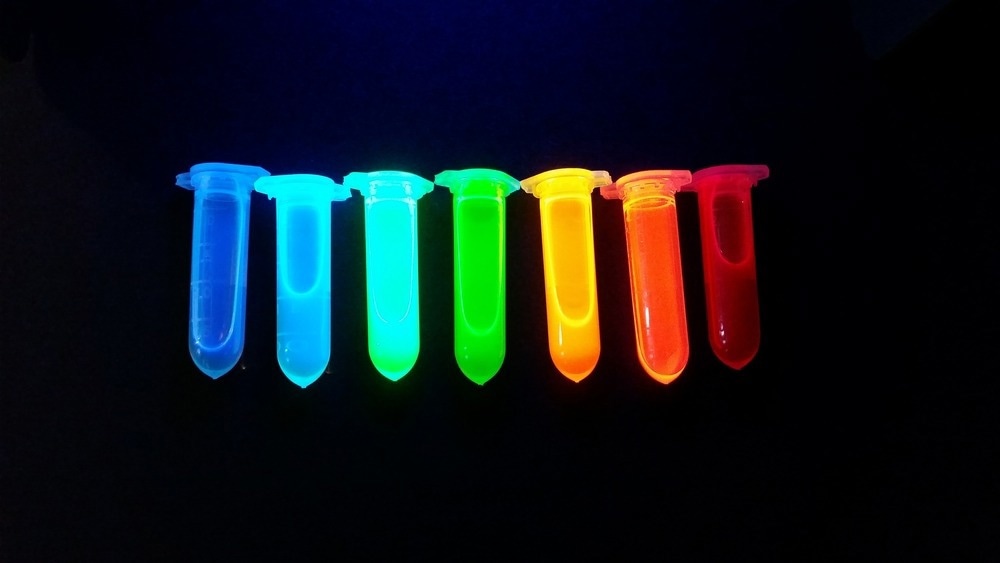Due to their easy bandgap tunability and low inter-system crossing loss, semiconductor nanocrystals (NCs) offer tremendous potential as sensitizers for triplet-triplet annihilation up-conversion (TTA-UC). However, there is still a lack of understanding of the link between bright/dark excitons and triplet energy transfer (TET).

Image Credit: Leo Matyushkin/Shutterstock.com
More study is required to uncover the differences between NCs-sensitized and molecular-sensitized TTA-UC, which is critical for further customizing and improving NCs-sensitized TTA-UC.
In a study published in Laser and Photonics Reviews, a research team led by Prof. Haomiao Zhu from the Chinese Academy of Sciences’ Fujian Institute of Research on the Structure of Matter utilized 1-naphthoic acid (1-NA, mediator) decorated 2 nm thick CsPbBr3 nanoplates (NPls) as the model system to investigate the contribution of bright/dark exciton to TET.
The researchers discovered that CsPbBr3 NPls’ well-characterized and distinctive exciton fine structure, along with its enormous bright-dark exciton splitting energy, provide an appropriate platform for unequivocally resolving the role of dark exciton in TET.
At low temperatures, the dark exciton will be densely dominated due to the huge bright-dark exciton splitting energy. The researchers discovered that the singlet dark exciton is the dominant energy source for TET by tracking the exciton decay dynamic at cryogenic temperatures in the presence of a mediator.
The efficient TET between dark singlet exciton and mediator was also explained by the researchers by taking into account the ill-defined nature of the exciton spin state.
The high orbit-spin coupling of the conduction band electron in CsPbBr3 NPls combines the triplet and singlet states, allowing TET between the singlet dark exciton and the triplet state of the mediator. Furthermore, the TET is considerably aided by the dark exciton’s extended intrinsic lifespan.
Furthermore, the researchers accomplished a successful visible-to-ultraviolet upconversion from 450 nm to 355 nm by combining 1-NA decorated CsPbBr3 NPls with 2,5-diphenyloxazole (PPO).
The excitation threshold in this system is only 0.79 W/cm2, which is more than two times lower than when standard CsPbBr3 nanocrystals are used as the sensitizer.
This research provides fresh insights on NPls sensitized TET and efficient visible-to-ultraviolet TTA-UC, both of which can significantly expand the working spectrum of TiO2 or NiO based photocatalysis.
Journal Reference
Xu, K., et al. (2023) Dark Singlet Exciton Sensitized Triplet Energy Transfer Across the CsPbBr3 Nanoplate-Organic Interface. Laser and Photonics Reviews. doi:10.1002/lpor.202200572.